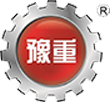Henan Zhonggong Group Helped CEEC Project Creating a Number of World Records
No. 6, Crane Industrial Park, Changyuan Town, Xinxiang City, Henan Province, China

Henan Zhonggong Group
Henan Tosta Machinery Co., Ltd.
Gantry Crane
Overhead Crane
Light Crane
Port & Container Crane
Launching Gantry Crane
Hoist & Crane Trolley
Crane Components
Electric Winch Overview
EOT Crane
The main fault of the hoist crane is "sinking beam". There are many influencing factors of sinking beam, which can be summarized as follows:
(1) Various parts of the metal structure of hoist crane have stresses of different directions and properties, some of which are from the load, while others are caused by the manufacturing process, welds, and uneven shrinkage of nearby metals. When a hoist crane is used, these stresses tend to be uniform and disappear, leading to plastic deformation of the structure.
(2) The influence of transportation, storage and hoisting of equipment. Unreasonable transportation, storage, hoisting and installation will cause deformation of bridge structure.
(3) The equipment used is designed under certain conditions. Unreasonable use such as overloading and unbalanced loads will cause bridge deformation.
(4) The impact of repair methods such as gas cutting or welding on the bridge. No measures have been taken to prevent the main beam of the hoist crane from sinking. Belt handle operation and remote control handle operation.
Working at heights refers to cab work. There are two types of cabs: open type and closed type. It can be divided into two types: left-mounted or right-mounted according to the actual situation. There are two kinds of entrance directions: side type and horizontal type, so as to meet the user's choice under various needs.
Due to the influence of high temperature, the sinking of the hoist crane beam in the processing workshop is more common than that in the cold processing workshop, and the degree of sinking is more serious.
Because of the radiant heat of smelting, the temperature of the lower cover plate of the main beam is higher than that of the upper cover plate, and the temperature increase of the lower cover plate is greater than that of the upper cover plate, resulting in the natural decrease of the temperature of the main beam under the load.
Hoist crane is the key equipment that users need to know how to operate, and the quality of the operation will directly determine whether the operation is smooth. Therefore, in order to avoid accidents and ensure the smooth progress of construction, we should operate in accordance with relevant regulations. The safety operation procedures of this equipment mainly include the following points:
(1) Before driving, carefully check whether the electrical components and safety protection devices of the hoist crane are in good condition and reliable. If the main accessories such as controller, brake, limiter, bell, emergency switch etc. fail, it is strictly forbidden to lift heavy objects.
(2) The speed should be slow when it is approaching the hoist limiter, or when large and small equipment approaches the dock or meets adjacent one. Do not use reverse instead of brakes, use a parking switch instead of a parking switch, and an emergency switch instead of a normal switch.
(3) Walk up and down the designated safe walkway, special platform of hoist crane or escalator, and walk on both sides of the track except for maintenance.
(4) When the work stops, do not hang heavy objects in the air. During operation, a warning bell should sound when someone is on the ground or when a suspension part is dropped. It is strictly forbidden to lift objects above people's heads, and objects should not be too high off the ground.
(5) When two devices lift an object at the same time, the operators should obey the command and keep in sync.
(6) When the hoist crane is operating, keep a certain distance between the equipment.
(7) The hoist crane should be stopped at a safe place. Cut off the power supply, and put up a warning sign of "No Closing". The ground should be fenced and a "No Pass" sign hung.
(8) When the hoist crane suddenly fails and slides during operation, emergency measures should be taken and do not land at any place with people.
(9) In the event of heavy rain, lightning strike or strong wind above level 6, the hoist crane should be stopped, the power supply should be cut off, and the pads before and after the wheels should be fastened.
(10) When driving, pay attention to whether there are obstacles on the track. When lifting tall objects that block the sight, special personnel should be on both sides to monitor and command.